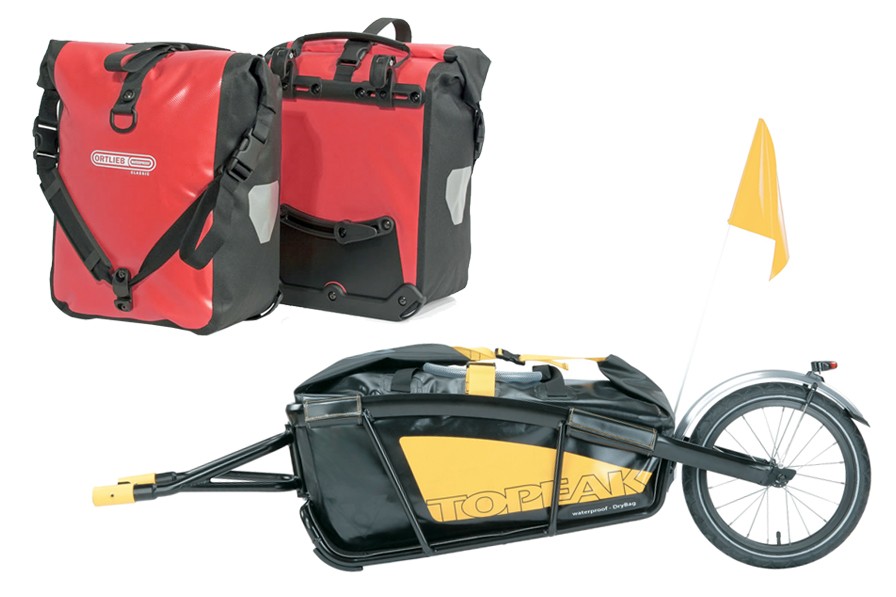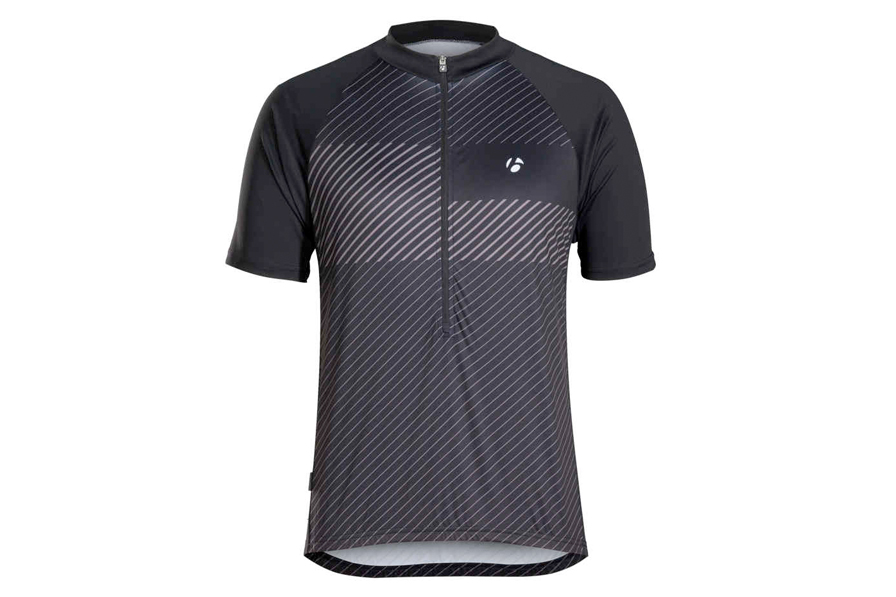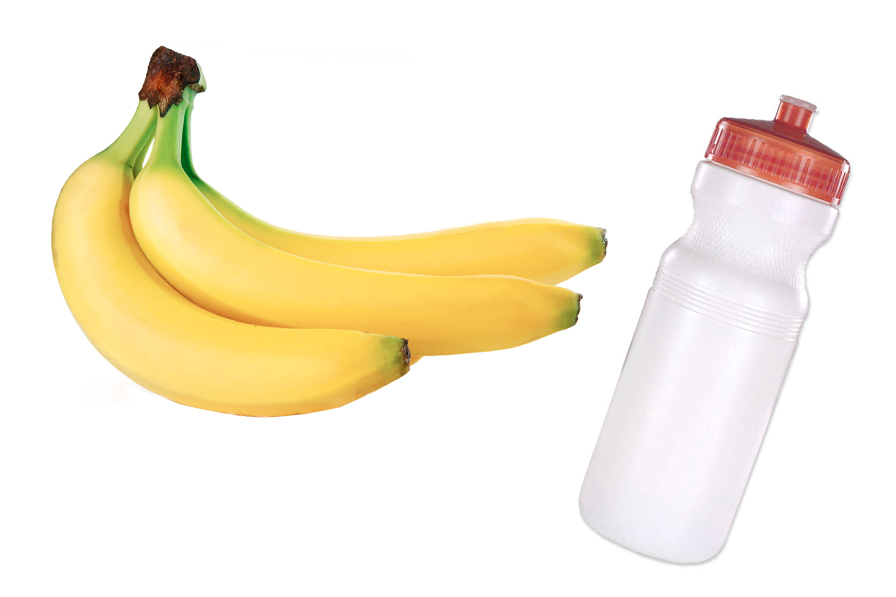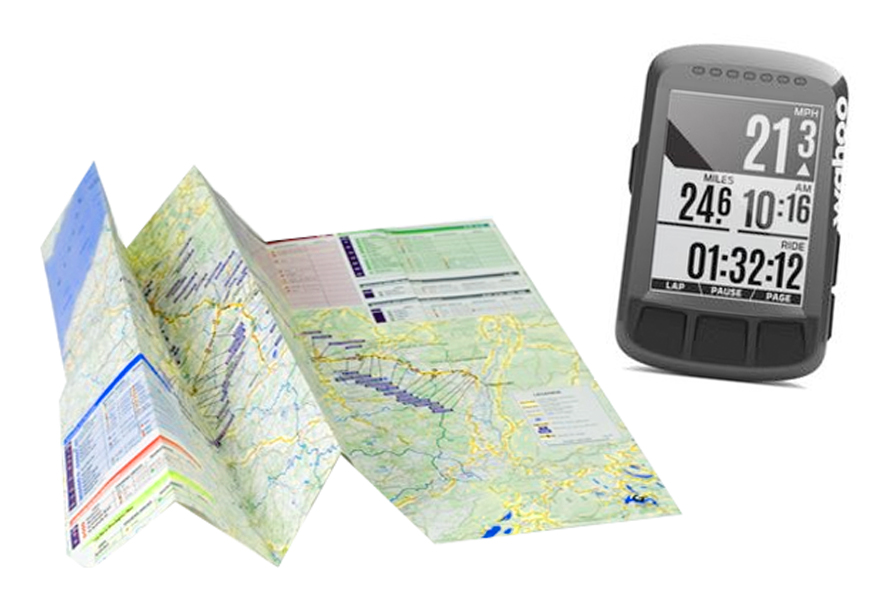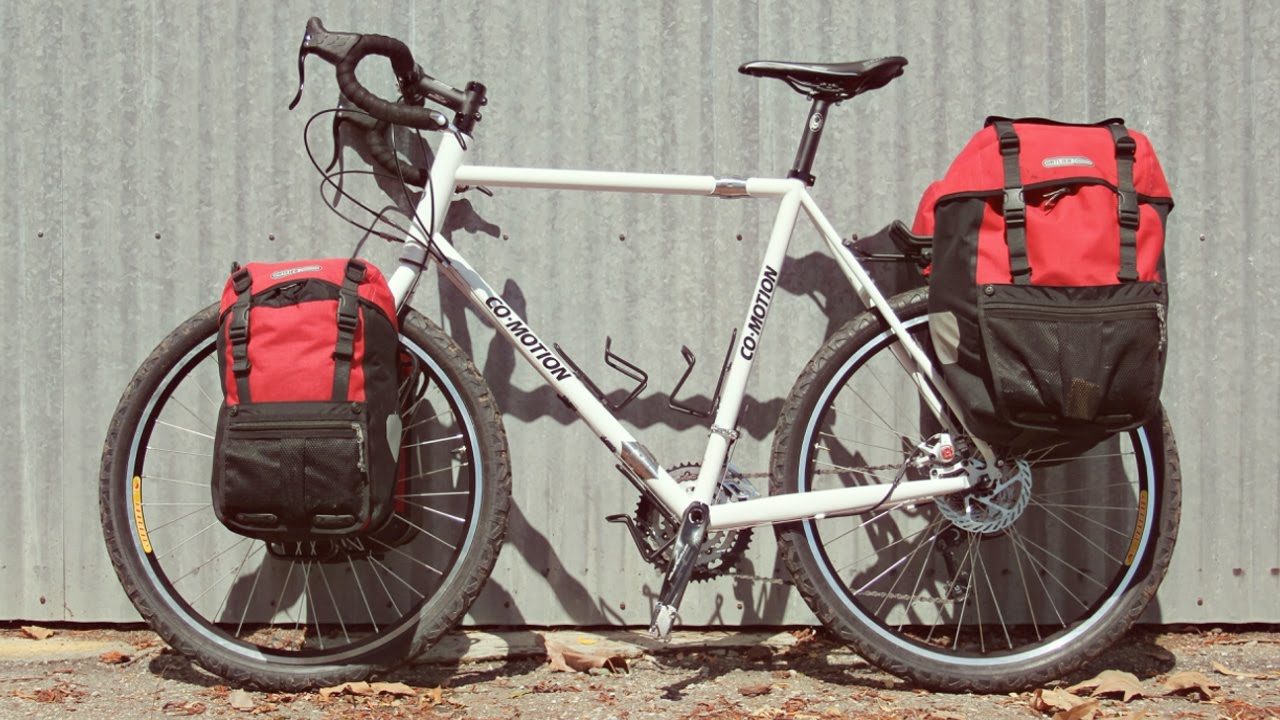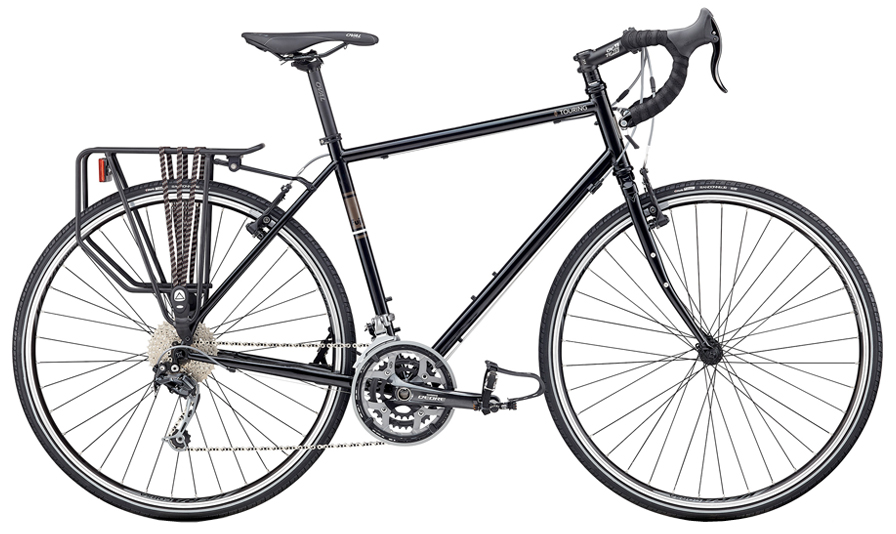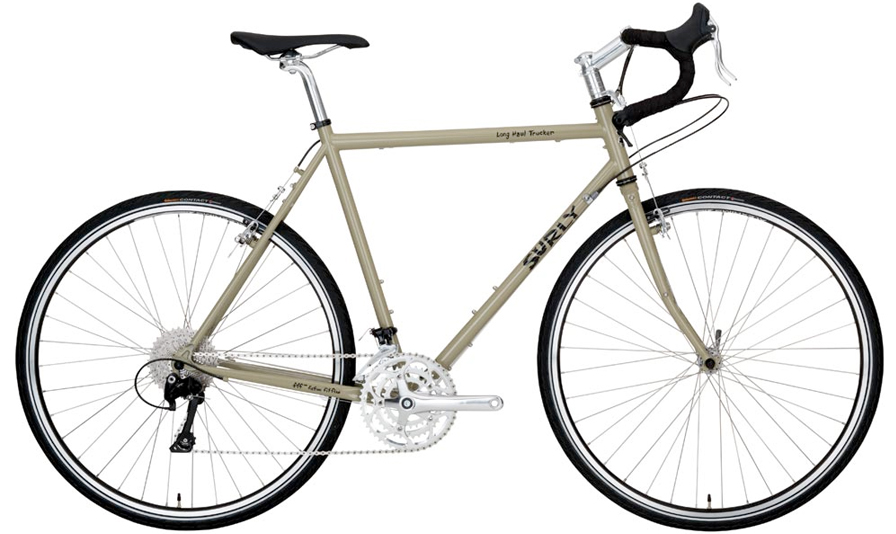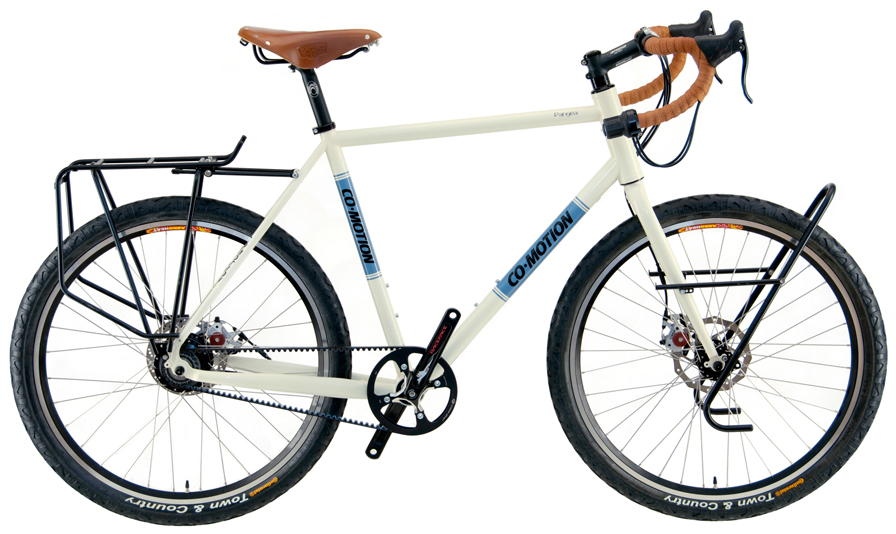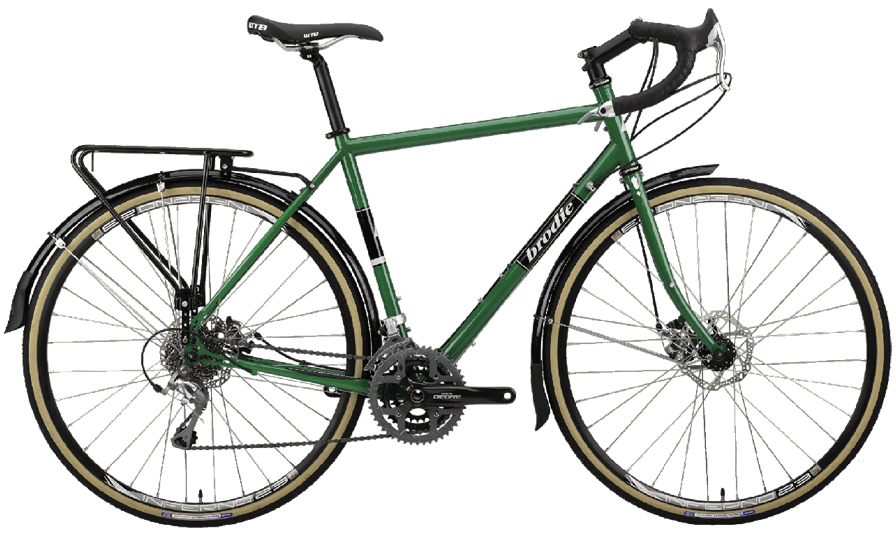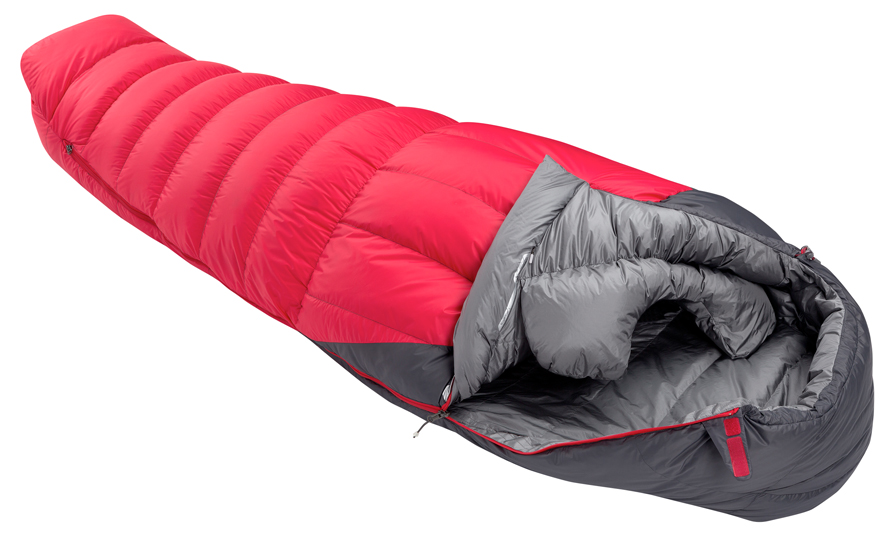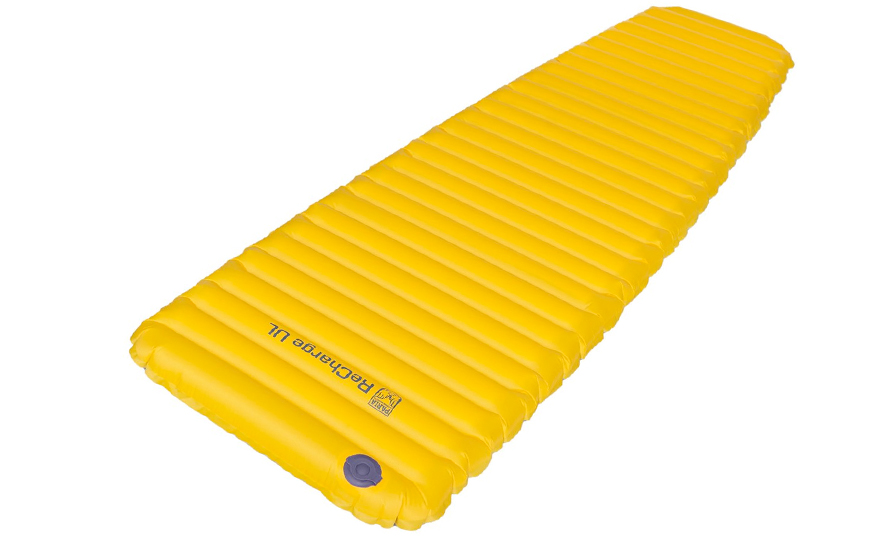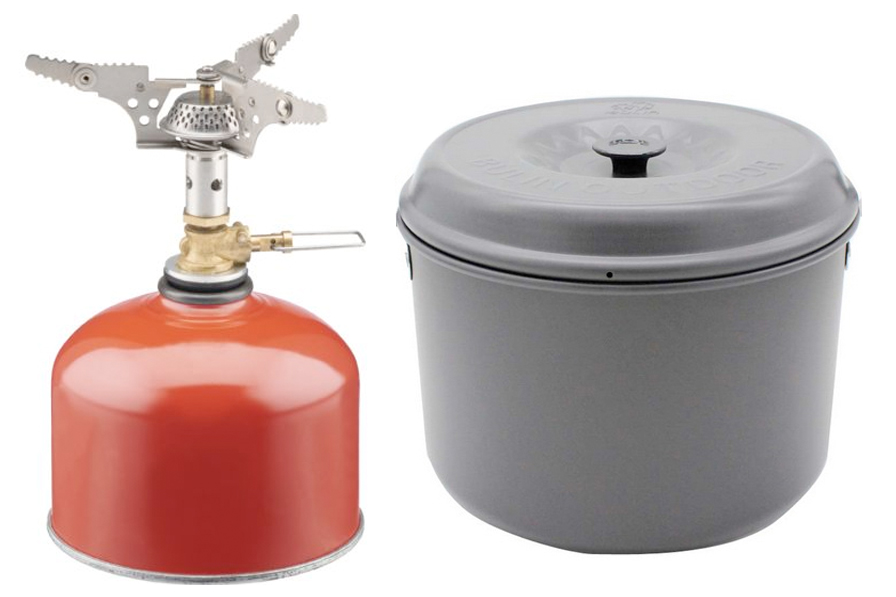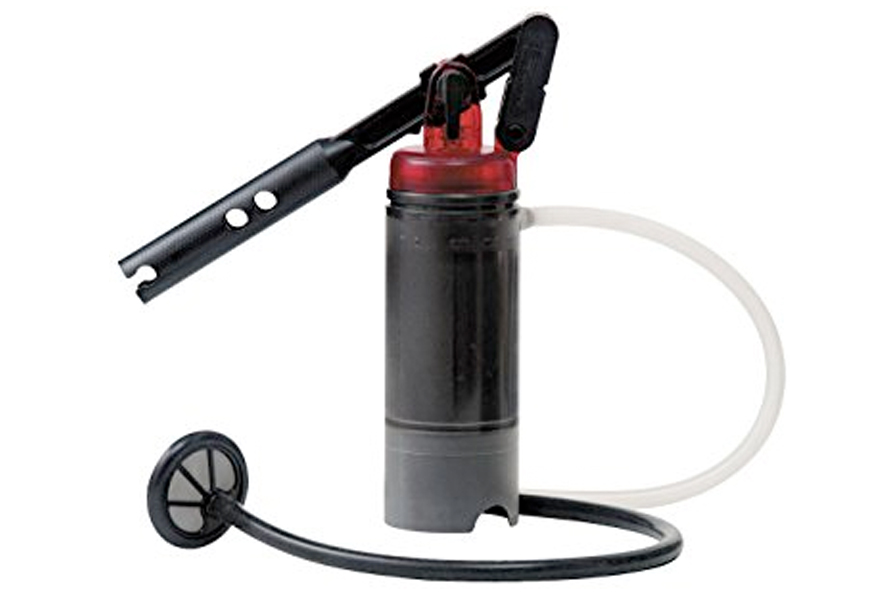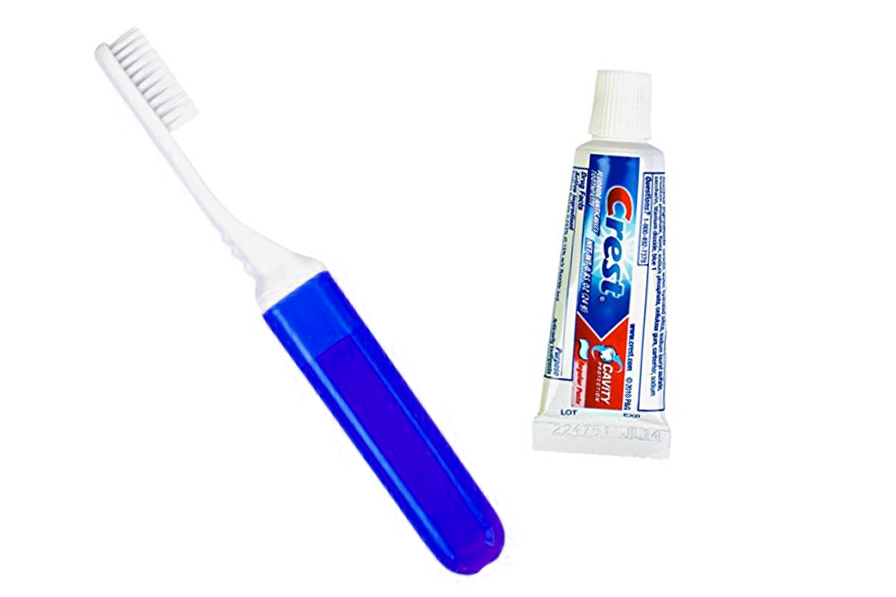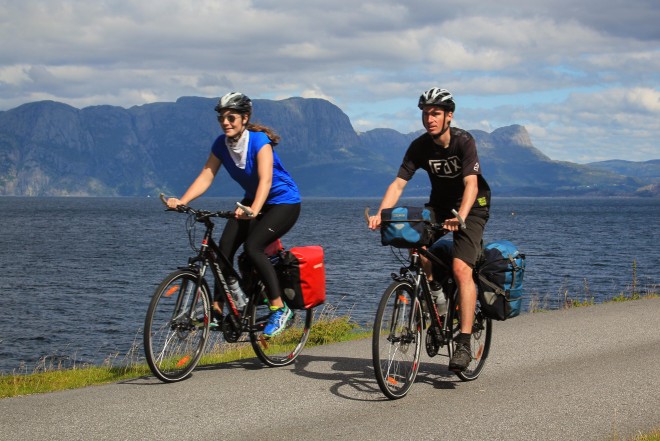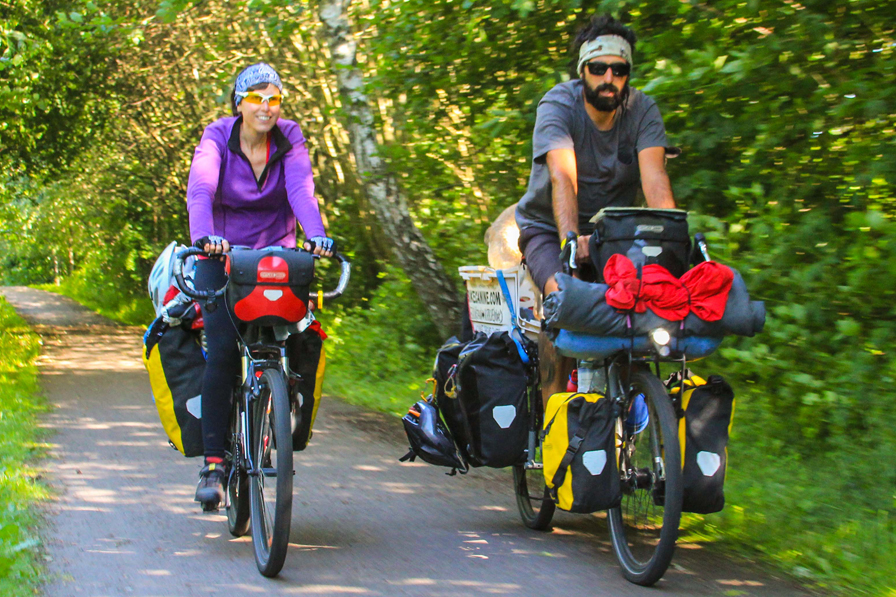
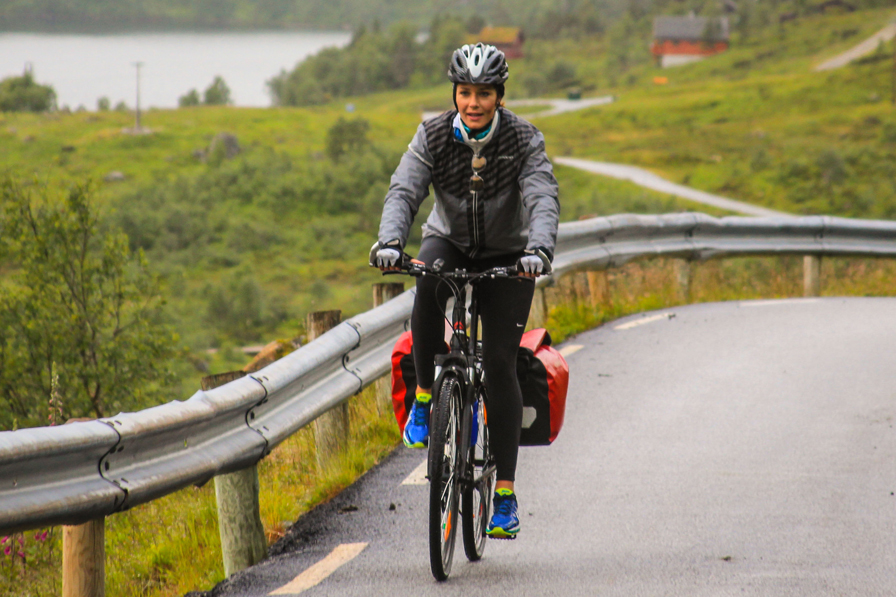

As its name implies, road touring is a type of bicycle touring that takes place mostly on paved roads and bike paths, but may occasionally include some cycling on dirt or gravel roads and/or single-track trails.
Road touring is sometimes also referred to as “traditional bicycle touring” as it the most common type of bicycle touring and has been around for the longest period of time. Click here to learn more about the three main types of bicycle touring and their various sub-types.
Bicycle Touring Essentials List
Road touring is easy! All you need to get started is a bicycle, a way to carry your belongings (such as in a trailer or a set of pannier bags), a few clothing essentials, food, water, and a route that you intend to follow.
One of the best things about bicycle touring is that if you’re like most people, you already own a number of the items you need to conduct your first bike trip. Most people start with the bicycle, gear, and clothing that they already own and then slowly build their bike touring equipment list as time goes on and they gain more experience.
Touring Bicycles
If you’re just getting started with road touring, you likely already own a bicycle that can be used for short bike tours near your home. With just a few small modifications, almost any bicycle can be used for a short, lightweight cycling adventure close to where you live.
Believe it or not, however, there are a whole range of bicycles on the marketplace today that were designed specifically for multi-day bicycle tours. These bicycles are called “touring bicycles” and they are unique from the road and mountain bike models you might be familiar with because they are designed:
- To be extremely comfortable over long distances.
- To carry your belongings with the use of front and rear racks and a set of pannier bags.
- To be easily repaired, should something go wrong with them once you are out there on the road.
While it is possible to use almost any type of bicycle on a road-based bike tour, the longer your bike trip is and the more equipment you wish to carry, the more important it becomes to at least consider using a proper touring bicycle.
If you need help determining whether or not the bike you have now is going to be good enough for your bicycle touring adventures, or you want some assistance finding the best touring bicycle for the type of bike tours you have in mind, then be sure to read “The Essential Guide To Touring Bicycles.”
The Essential Guide To Touring Bicycles will teach you what to look for in a quality touring bicycle. Plus, you’ll be given access to the world’s largest collection of touring bicycles – a detailed directory where you will be introduced to more than 130 different types of touring bicycles made in various countries all around the world. From this database of 130+ bicycles, I will help you narrow down the selection and find the touring bicycle that is best suited for you and the type of bicycle touring that you have in mind.
Daily Distances & Speed
The average bicycle tourist traveling on paved roads or bike paths covers between 40 and 60 miles (64 – 96 kilometers) each day. However, distances both shorter and longer than this are quite common.
It’s important when you’re first starting out that you don’t try to cycle too far on any given day. Keep your daily distances short and then increase your milage/kilometers each day until you are comfortable cycling 40 to 60 miles (64 – 96 kilometers) in a 24-hour period.
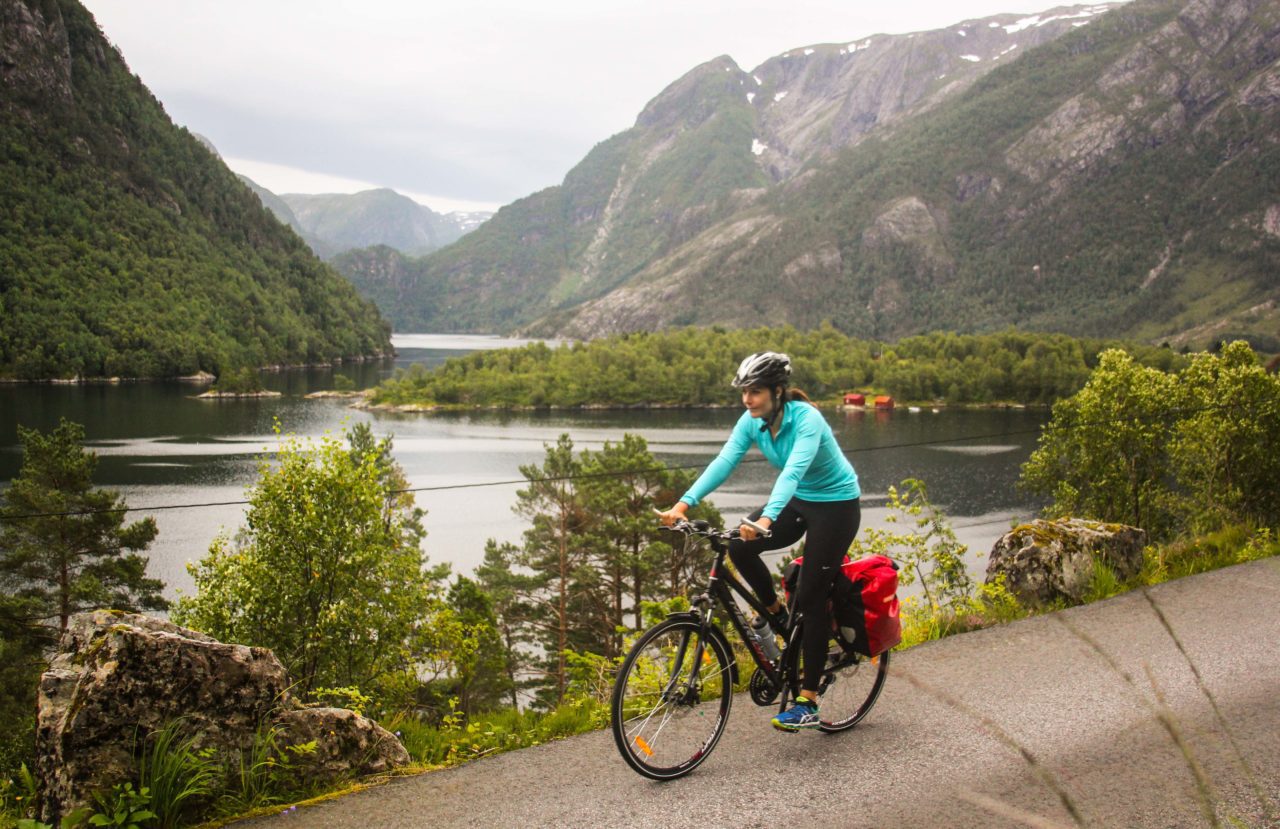

The speed at which you travel will depend on the topography, weather conditions, the bike you’re riding, the amount of gear you’re carrying, how you’re feeling on any given day, and a whole host of additional factors. However, most people conducting a road-based bike tour are able to cover, on average, approximately 10 miles (16 kilometers) per hour.
Therefore, you might expect a 50 mile (80 km) bike ride to take approximately 5-6 hours to complete.
Where Will You Sleep?
Where you sleep at night on a bike tour is largely up to you, where you are in the world, your budget, and which accommodations are available to you.
Hotels & Hostels
Many of the people who choose to conduct a road-based bike tour opt to stay in affordable hostels and/or hotels along their route.


Camping
Other bicycle tourists choose to camp in campgrounds or simply sleep in the wild when nightfall approaches.
Apartment Rentals
Finally, some bicycle tourists choose to rent private apartments and/or houses using web-based services such as AirBNB, Booking.com and VRBO.
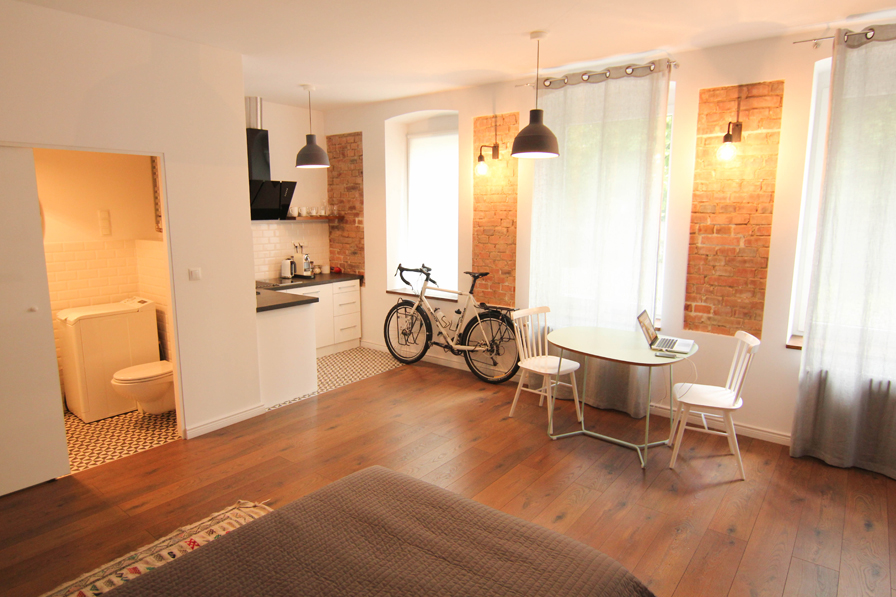
The great thing about bicycle touring is that you can decide which accommodation type you are most comfortable with.
- If you want to stay in hotels each night, take a hot shower each day, and sleep in a comfortable bed, then you can do that on a road-based bike tour!
- Or if you prefer, you may opt to sleep in a tent or a hammock. You’ll save a lot of money this way and you’ll be surrounded by nature a whole lot more often than someone staying in hotels each night.
- Finally, you might try reaching out to friends, family members, co-workers, loved ones, and even strangers, to ask if they would be willing to host you as you pass through their part of the world on your bicycle tour.
Camping Equipment
If you choose to stay in hotels or hostels on every night of your bike tour, you can leave the camping equipment at home. But if you choose to camp on your bike tour, there are really only three main items you need to make sure you pack: a tent, a sleeping bag, and a sleeping pad or mat.
Camping on a bike tour gives you the freedom to sleep almost anywhere you want, which can not only provide you with some unique experiences during the length of your bike tour, but can also dramatically decrease the overall cost of your trip.
While tent camping is most people, some people chose to sleep in a hammock and others opt for a lightweight bivy sack on their bicycle touring adventures. However, most bicycle tourists tend to opt for the comfort and weather protection that a quality 3-season tent proves.
If you have a little extra money to spare, spending it on a high-quality tent, sleeping pad and sleeping bag is probably a good place to spend it. Inexpensive camping gear is usually large and heavy, while the more higher-end products tend to be small and lightweight (which is important when you’re packing your bike for a long-distance bike tour).
Bicycle Touring Accessories
There are, of course, a whole host of other things you might wish to carry with you on a bike tour.
These items are all optional, however. Whether or not you choose to carry any of these items on your bike tour is going to depend on where you plan to go on your bike tour, how long you plan to be on the road, what kind of services will be available along your route, what your personal goals are for your cycling adventure, and your personal preferences.
You can learn a lot by looking at what others packing on their bike tours. Here are some of the bike tour packing lists I’ve published in the past. Use them to help you pack for your own bike tours, and modify them as you see fit.
For more assistance with figuring out which gear, tools, equipment and clothing is essential for your bike tour, please refer to “The Bicycle Touring Blueprint.” Inside the book you’ll find a number of different bike tour packing lists designed for various types of bicycle tours.
Bicycle Touring Gear Weight
As you can see, there’s a whole range of items you might choose to carry with you on your bicycle touring adventures. Which brings up the question, how much does all of this weigh?
The vast majority of touring bicycles weigh between 26 and 33 lbs (12 – 15 kg) when they are equipped with only fenders, front and rear racks, and water bottle cages. It’s important to note, however, that touring bicycles come in all kinds of different shapes and sizes, so the weight of these bicycles can vary quite a bit depending on the model, size, and brand of accessories that are used in conjunction with the bike.
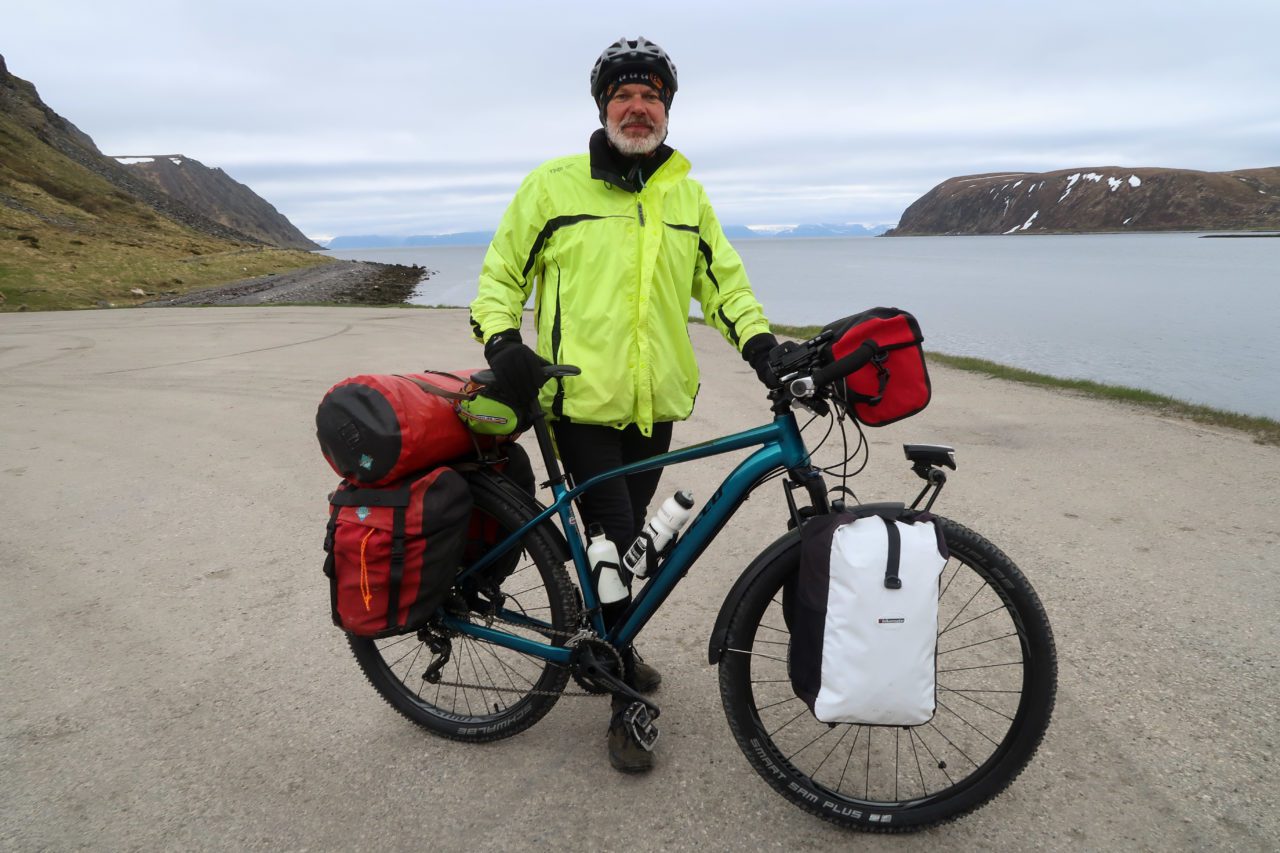
A touring bicycle that is equipped with panniers or a trailer and carrying a full supply of food, clothing, water, camping gear, and other essentials is called a “loaded touring bicycle.”
As you might suspect, a loaded touring bicycle is far heavier than a bike fitted only with racks, fenders, and water bottle cages. Once you add camping equipment, food, clothing, water, toiletries, and other personal items, your complete touring bicycle might weigh 30 – 60 lbs (13 – 27 kg) more than it did previously. This means that a loaded touring bicycle can weigh as much as 60 to 100 lbs (27 – 45 kg).
Ultimately, there is no rule as to how much your loaded touring bicycle should weigh. However, effort should be made to make your bicycle weigh as little as possible. The lighter your bike, the easier and more enjoyable it will be to ride… and the further you’ll be able to cycle on any given day.
Are You Ready To Go Bicycle Touring?
Thousands of people of all ages, incomes, and backgrounds go bicycle touring each year… and you can be one of them!
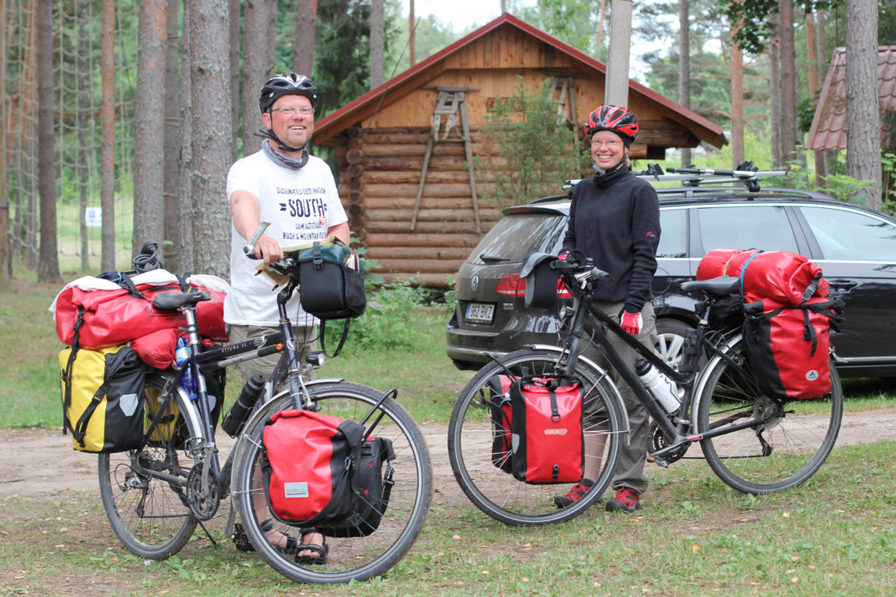
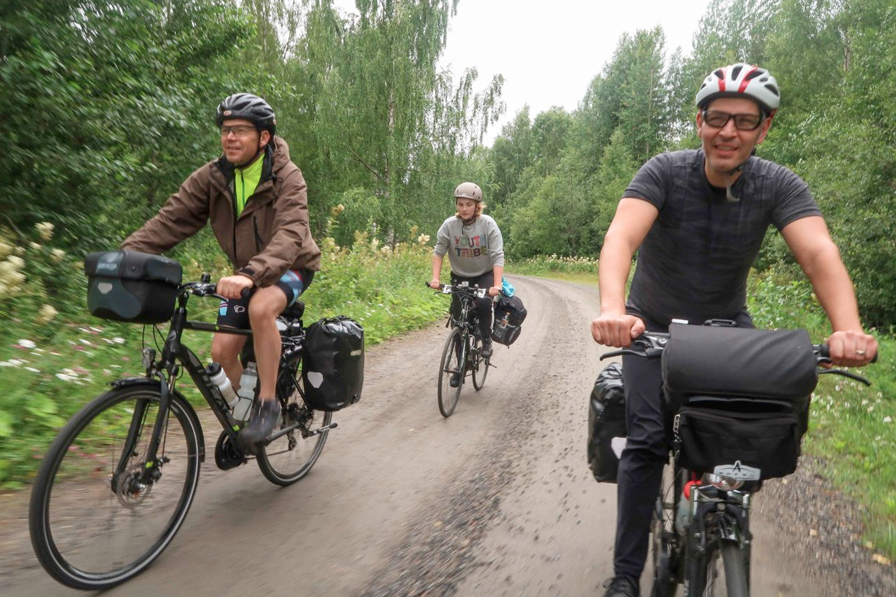
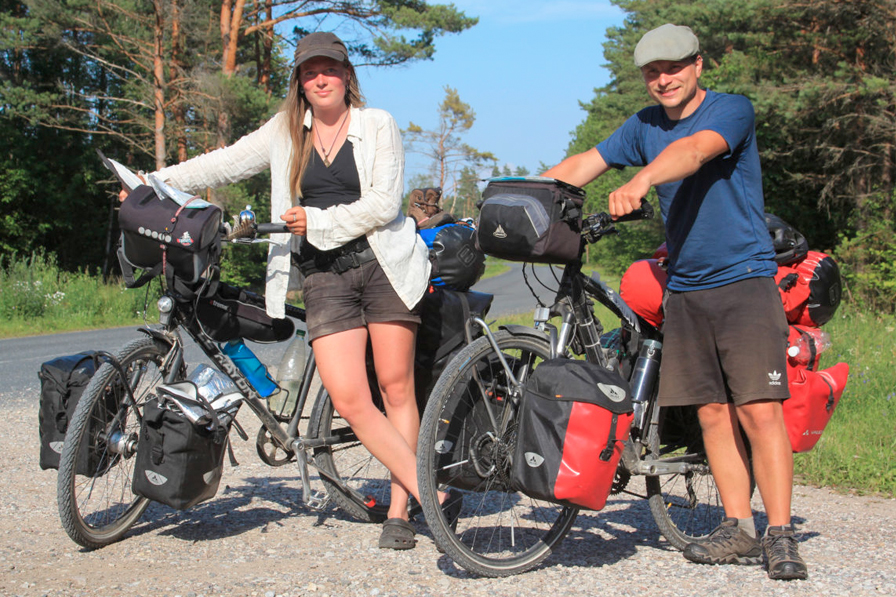
If you’re interested in learning more about road touring and want to discover some of my best tips and tricks for bike touring success, simply enter your name and email address in the form below and you’ll gain access to the FREE Bicycle Touring Pro starter guide.
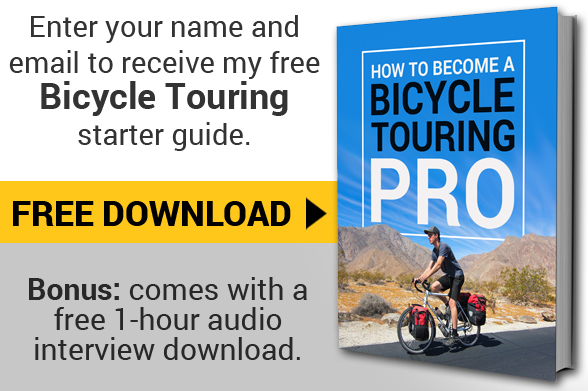
When you enter your name and email here, you’ll be automatically subscribed to the FREE Bicycle Touring Pro email newsletter, which will teach you the basics of bicycle touring and keep you up to date with the latests news, events, product reviews, and happenings at www.bicycletouringpro.com


